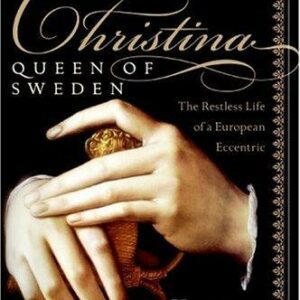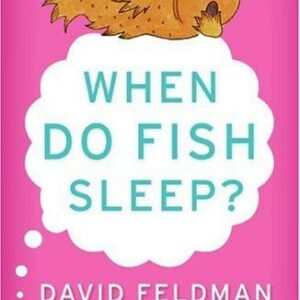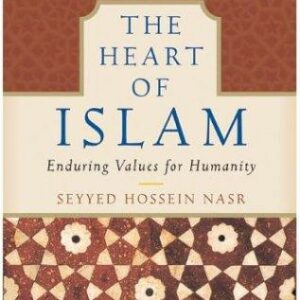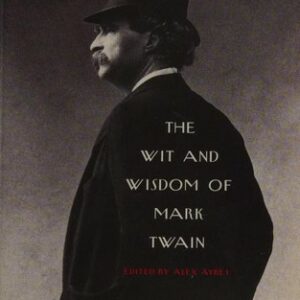The Cold War
$18.00
| Title | Range | Discount |
|---|---|---|
| Trade Discount | 5 + | 25% |
- Description
- Additional information
Description
“Outstanding . . . The most accessible distillation of that conflict yet written.” —The Boston Globe
“Energetically written and lucid, it makes an ideal introduction to the subject.” —The New York Times
The “dean of Cold War historians” (The New York Times) now presents the definitive account of the global confrontation that dominated the last half of the twentieth century. Drawing on newly opened archives and the reminiscences of the major players, John Lewis Gaddis explains not just what happened but why—from the months in 1945 when the U.S. and the U.S.S.R. went from alliance to antagonism to the barely averted holocaust of the Cuban Missile Crisis to the maneuvers of Nixon and Mao, Reagan and Gorbachev. Brilliant, accessible, almost Shakespearean in its drama, The Cold War stands as a triumphant summation of the era that, more than any other, shaped our own.
Gaddis is also the author of On Grand Strategy.The Cold WarPreface
List of Maps
Prologue: The View Forward
I. The Return Of Fear
II. Deathboats And Lifeboats
III. Command Versus Spontaneity
IV. The Emergence Of Autonomy
V. The Recovery Of Equity
VI. Actors
VII. The Triumph Of Hope
Epilogue: The View Back
Notes
Bibliography
Index
“Outstanding . . . The most accessible distillation of that conflict yet written.” —The Boston Globe
“Energetically written and lucid, it makes an ideal introduction to the subject.” —The New York Times
“A fresh and admirably concise history . . . Gaddis’s mastery of the material, his fluent style and eye for the telling anecdote make his new work a pleasure.” —The EconomistJohn Lewis Gaddis is the Robert A. Lovett Professor of History of Yale University. He is the author of numerous books, including On Grand Strategy, The United States and the Origins of the Cold War, 1941-1947 (1972); Strategies of Containment: A Critical Appraisal of Postwar American National Security (1982); The Long Peace: Inquiries into the History of the Cold War (1987); We Now Know: Rethinking Cold War History (1997); The Landscape of History: How Historians Map the Past (2002); and Surprise, Security, and the American Experience (2004).
PROLOGUE
THE VIEW FORWARD
IN 1946 a forty-three-year-old Englishman named Eric Blair rented a house at the edge of the world—a house in which he expected to die. It was on the northern tip of the Scottish island of Jura, at the end of a dirt track, inaccessible by automobile, with no telephone or electricity. The nearest shop, the only one on the island, was some twenty-five miles to the south. Blair had reasons to want remoteness. Dejected by the recent death of his wife, he was suffering from tuberculosis and would soon begin coughing up blood. His country was reeling from the costs of a military victory that had brought neither security, nor prosperity, nor even the assurance that freedom would survive. Europe was dividing into two hostile camps, and the world seemed set to follow. With atomic bombs likely to be used, any new war would be apocalyptic. And he needed to finish a novel.
Its title was 1984, an inversion of the year in which he completed it, and it appeared in Great Britain and the United States in 1949 under Blair’s pen name, George Orwell. The reviews, the New York Times noted, were “overwhelmingly admiring,” but “with cries of terror rising above the applause.”1 This was hardly surprising because 1984 evoked an age, only three and a half decades distant, in which totalitarianism has triumphed everywhere. Individuality is smothered, along with law, ethics, creativity, linguistic clarity, honesty about history, and even love—apart, of course, from the love everyone is forced to feel for the Stalin-like dictator “Big Brother” and his counterparts, who run a world permanently at war. “If you want a picture of the future,” Orwell’s hero Winston Smith is told, as he undergoes yet another session of relentless torture, “imagine a boot stamping on a human face—forever.”2
Orwell did die early in 1950—in a London hospital, not on his island—knowing only that his book had impressed and frightened its first readers. Subsequent readers responded similarly: 1984 became the single most compelling vision in the post–World War II era of what might follow it. As the real year 1984 approached, therefore, comparisons with Orwell’s imaginary year became inescapable. The world was not yet totalitarian, but dictators dominated large parts of it. The danger of war between the United States and the Soviet Union—two superpowers instead of the three Orwell had anticipated—seemed greater than it had for many years. And the apparently permanent conflict known as the “Cold War,” which began while Orwell was still alive, showed not the slightest signs of ending.
But then, on the evening of January 16, 1984, an actor Orwell would have recognized from his years as a film reviewer appeared on television in his more recent role as president of the United States. Ronald Reagan’s reputation until this moment had been that of an ardent Cold Warrior. Now, though, he envisaged a different future:
Just suppose with me for a moment that an Ivan and an Anya could find themselves, say, in a waiting room, or sharing a shelter from the rain or a storm with a Jim and Sally, and that there was no language barrier to keep them from getting acquainted. Would they then deliberate the differences between their respective governments? Or would they find themselves comparing notes about their children and what each other did for a living? . . . They might even have decided that they were all going to get together for dinner some evening soon. Above all, they would have proven that people don’t make wars.3
It was an unexpectedly gentle invitation for human faces to prevail over boots, dictators, and the mechanisms of war. It set in motion, in Orwell’s year 1984, the sequence of events by which they would do so. Just over a year after Reagan’s speech, an ardent enemy of totalitarianism took power in the Soviet Union. Within six years, that country’s control over half of Europe had collapsed. Within eight, the Union of Soviet Socialist Republics—the country that had provoked Orwell’s great gloomy prophecy in the first place—had itself ceased to exist.
These things did not happen simply because Reagan gave a speech or because Orwell wrote a book: the remainder of this book complicates the causation. It is worth starting with visions, though, because they establish hopes and fears. History then determines which prevail.
CHAPTER ONE
THE RETURN OF FEAR
We waited for them to come ashore. We could see their faces. They looked like ordinary people. We had imagined something different. Well, they were Americans!
—LIUBOVA KOZINCHENKA,
Red Army, 58th Guards Division
I guess we didn’t know what to expect from the Russians, but when you looked at them and examined them, you couldn’t tell whether, you know? If you put an American uniform on them, they could have been American!
—AL ARONSON,
U.S. Army, 69th Infantry Division1
THIS WAS THE WAY the war was supposed to end: with cheers, handshakes, dancing, drinking, and hope. The date was April 25, 1945, the place the eastern German city of Torgau on the Elbe, the event the first meeting of the armies, converging from opposite ends of the earth, that had cut Nazi Germany in two. Five days later Adolf Hitler blew his brains out beneath the rubble that was all that was left of Berlin. Just over a week after that, the Germans surrendered unconditionally. The leaders of the victorious Grand Alliance, Franklin D. Roosevelt, Winston Churchill, and Josef Stalin, had already exchanged their own handshakes, toasts, and hopes for a better world at two wartime summits—Teheran in November, 1943, and Yalta in February, 1945. These gestures would have meant little, though, had the troops they commanded not been able to stage their own more boisterous celebration where it really counted: on the front lines of a battlefield from which the enemy was now disappearing.
Why, then, did the armies at Torgau approach one another warily, as if they’d been expecting interplanetary visitors? Why did the resemblances they saw seem so surprising—and so reassuring? Why, despite these, did their commanders insist on separate surrender ceremonies, one for the western front at Reims, in France, on May 7th, another for the eastern front in Berlin on May 8th? Why did the Soviet authorities try to break up spontaneous pro-American demonstrations that erupted in Moscow following the official announcement of the German capitulation? Why did the American authorities, during the week that followed, abruptly suspend critical shipments of Lend-Lease aid to the U.S.S.R., and then resume them? Why did Roosevelt’s key aide Harry Hopkins, who had played a decisive role in crafting the Grand Alliance in 1941, have to rush to Moscow six weeks after his boss’s death to try to save it? Why for that matter, years later, would Churchill title his memoir of these events Triumph and Tragedy?
The answer to all of these questions is much the same: that the war had been won by a coalition whose principal members were already at war—ideologically and geopolitically if not militarily—with one another. Whatever the Grand Alliance’s triumphs in the spring of 1945, its success had always depended upon the pursuit of compatible objectives by incompatible systems. The tragedy was this: that victory would require the victors either to cease to be who they were, or to give up much of what they had hoped, by fighting the war, to attain.
I.
HAD THERE really been an alien visitor on the banks of the Elbe in April, 1945, he, she, or it might indeed have detected superficial resemblances in the Russian and American armies that met there, as well as in the societies from which they had come. Both the United States and the Soviet Union had been born in revolution. Both embraced ideologies with global aspirations: what worked at home, their leaders assumed, would also do so for the rest of the world. Both, as continental states, had advanced across vast frontiers: they were at the time the first and third largest countries in the world. And both had entered the war as the result of surprise attack: the German invasion of the Soviet Union, which began on June 22, 1941, and the Japanese strike against Pearl Harbor on December 7, 1941, which Hitler used as an excuse to declare war on the United States four days later. That would have been the extent of the similarities, though. The differences, as any terrestrial observer could have quickly pointed out, were much greater.
The American Revolution, which had happened over a century and a half earlier, reflected a deep distrust of concentrated authority. Liberty and justice, the Founding Fathers had insisted, could come only through constraining power. Thanks to an ingenious constitution, their geographical isolation from potential rivals, and a magnificent endowment of natural resources, the Americans managed to build an extraordinarily powerful state, a fact that became obvious during World War II. They accomplished this, however, by severely restricting their government’s capacity to control everyday life, whether through the dissemination of ideas, the organization of the economy, or the conduct of politics. Despite the legacy of slavery, the near extermination of native Americans, and persistent racial, sexual, and social discrimination, the citizens of the United States could plausibly claim, in 1945, to live in the freest society on the face of the earth.
The Bolshevik Revolution, which had happened only a quarter century earlier, had in contrast involved the embrace of concentrated authority as a means of overthrowing class enemies and consolidating a base from which a proletarian revolution would spread throughout the world. Karl Marx claimed, in the Communist Manifesto of 1848, that the industrialization capitalists had set in motion was simultaneously expanding and exploiting the working class, which would sooner or later liberate itself. Not content to wait for this to happen, Vladimir Ilyich Lenin sought to accelerate history in 1917 by seizing control of Russia and imposing Marxism on it, even though that state failed to fit Marx’s prediction that the revolution could only occur in an advanced industrial society. Stalin in turn fixed that problem by redesigning Russia to fit Marxist-Leninist ideology: he forced a largely agrarian nation with few traditions of liberty to become a heavily industrialized nation with no liberty at all. As a consequence, the Union of Soviet Socialist Republics was, at the end of World War II, the most authoritarian society anywhere on the face of the earth.
If the victorious nations could hardly have been more different, the same was true of the wars they had fought from 1941 to 1945. The United States waged separate wars simultaneously—against the Japanese in the Pacific and the Germans in Europe—but suffered remarkably few casualties: just under 300,000 Americans died in all combat theaters. Geographically distant from where the fighting was taking place, their country experienced no significant attacks apart from the initial one at Pearl Harbor. With its ally Great Britain (which suffered about 357,000 war deaths), the United States was able to choose where, when, and in what circumstances it would fight, a fact that greatly minimized the costs and risks of fighting. But unlike the British, the Americans emerged from the war with their economy thriving: wartime spending had caused their gross domestic product almost to double in less than four years. If there could ever be such a thing as a “good” war, then this one, for the United States, came close.
The Soviet Union enjoyed no such advantages. It waged only one war, but it was arguably the most terrible one in all of history. With its cities, towns, and countryside ravaged, its industries ruined or hurriedly relocated beyond the Urals, the only option apart from surrender was desperate resistance, on terrain and in circumstances chosen by its enemy. Estimates of casualties, civilian and military, are notoriously inexact, but it is likely that some 27 million Soviet citizens died as a direct result of the war—roughly 90 times the number of Americans who died. Victory could hardly have been purchased at greater cost: the U.S.S.R. in 1945 was a shattered state, fortunate to have survived. The war, a contemporary observer recalled, was “both the most fearful and the proudest memory of the Russian people.”2
When it came to shaping the postwar settlement, however, the victors were more evenly matched than these asymmetries might suggest. The United States had made no commitment to reverse its long-standing tradition of remaining aloof from European affairs—Roosevelt had even assured Stalin, at Teheran, that American troops would return home within two years after the end of the war.3 Nor, given the depressing record of the 1930s, could there be any assurance that the wartime economic boom would continue, or that democracy would again take root beyond the relatively few countries in which it still existed. The stark fact that the Americans and the British could not have defeated Hitler without Stalin’s help meant that World War II was a victory over fascism only—not over authoritarianism and its prospects for the future.
Meanwhile, the Soviet Union had significant assets, despite the immense losses it had suffered. Because it was part of Europe, its military forces would not be withdrawing from Europe. Its command economy had shown itself capable of sustaining full employment when the capitalist democracies had failed, during the prewar years, to do so. Its ideology enjoyed widespread respect in Europe because communists there had largely led the resistance against the Germans. Finally, the disproportionate burden the Red Army had borne in defeating Hitler gave the U.S.S.R. a moral claim to substantial, perhaps even preponderant, influence in shaping the postwar settlement. It was at least as easy to believe, in 1945, that authoritarian communism was the wave of the future as that democratic capitalism was.
The Soviet Union had one other advantage as well, which was that it alone among the victors emerged from the war with tested leadership. Roosevelt’s death on April 12, 1945, had catapulted his inexperienced and ill-informed vice president, Harry S. Truman, into the White House. Three months later, Churchill’s unexpected defeat in the British general election made the far less formidable Labour Party leader, Clement Attlee, prime minister. The Soviet Union, in contrast, had Stalin, its unchallenged ruler since 1929, the man who remade his country and then led it to victory in World War II. Crafty, formidable, and to all appearances calmly purposeful, the Kremlin dictator knew what he wanted in the postwar era. Truman, Attlee, and the nations they led seemed much less certain.
II.
SO WHAT did Stalin want? It makes sense to start with him, because only he of the three postwar leaders had had the time, while retaining the authority, to consider and rank his priorities. Sixty-five at the end of the war, the man who ran the Soviet Union was physically exhausted, surrounded by sycophants, personally lonely—but still firmly, even terrifyingly, in control. His scrawny mustache, discolored teeth, pock-marked face, and yellow eyes, an American diplomat recalled, “gave him the aspect of an old battle-scarred tiger. . . . An unforewarned visitor would never have guessed what depths of calculation, ambition, love of power, jealousy, cruelty, and sly vindictiveness lurked behind this unpretentious façade.”4 Through a series of purges during the 1930s, Stalin had long since eliminated all his rivals. The raising of an eyebrow or the flick of a finger, subordinates knew, could mean the difference between life and death. Strikingly short—only five feet four inches—this paunchy little old man was nonetheless a colossus, bestriding a colossal state.
Stalin’s postwar goals were security for himself, his regime, his country, and his ideology, in precisely that order. He sought to make sure that no internal challenges could ever again endanger his personal rule, and that no external threats would ever again place his country at risk. The interests of communists elsewhere in the world, admirable though those might be, would never outweigh the priorities of the Soviet state as he had determined them. Narcissism, paranoia, and absolute power came together in Stalin:5 he was, within the Soviet Union and the international communist movement, enormously feared—but also widely worshipped.
Wartime expenditures in blood and treasure, Stalin believed, should largely determine who got what after the war: the Soviet Union, therefore, would get a lot.6 Not only would it regain the territories it had lost to the Germans during World War II; it would also retain the territories it had taken as a result of the opportunistic but shortsighted “nonaggression” pact Stalin had concluded with Hitler in August, 1939—portions of Finland, Poland, and Romania, all of the Baltic States. It would require that states beyond these expanded borders remain within Moscow’s sphere of influence. It would seek territorial concessions at the expense of Iran and Turkey (including control of the Turkish Straits), as well as naval bases in the Mediterranean. Finally, it would punish a defeated and devastated Germany through military occupation, property expropriations, reparations payments, and ideological transformation.
Herein there lay, however, a painful dilemma for Stalin. Disproportionate losses during the war may well have entitled the Soviet Union to disproportionate postwar gains, but they had also robbed that country of the power required to secure those benefits unilaterally. The U.S.S.R. needed peace, economic assistance, and the diplomatic acquiescence of its former allies. There was no choice for the moment, then, but to continue to seek the cooperation of the Americans and the British: just as they had depended on Stalin to defeat Hitler, so Stalin now depended on continued Anglo-American goodwill if he was to obtain his postwar objectives at a reasonable cost. He therefore wanted neither a hot war nor a cold war.7 Whether he would be skillful enough to avoid these alternatives, however, was quite a different matter.
For Stalin’s understanding of his wartime allies and their postwar objectives was based more on wishful thinking than on an accurate assessment of priorities as seen from Washington and London. It was here that Marxist-Leninist ideology influenced Stalin, because his illusions arose from it. The most important one was the belief, which went back to Lenin, that capitalists would never be able to cooperate with one another for very long. Their inherent greediness—the irresistible urge to place profits above politics—would sooner or later prevail, leaving communists with the need only for patience as they awaited their adversaries’ self-destruction. “The alliance between ourselves and the democratic faction of the capitalists succeeds because the latter had an interest in preventing Hitler’s domination,” Stalin commented as the war was coming to a close. “[I]n the future we shall be against this faction of the capitalists as well.”8
This idea of a crisis within capitalism did have some plausibility. World War I, after all, had been a war among capitalists; it thereby provided the opportunity for the world’s first communist state to emerge. The Great Depression left the remaining capitalist states scrambling to save themselves rather than cooperating to rescue the global economy or to maintain the postwar settlement: Nazi Germany arose as a result. With the end of World War II, Stalin believed, the economic crisis was bound to return. Capitalists would then need the Soviet Union, rather than the other way around. That is why he fully expected the United States to lend the Soviet Union several billion dollars for re-construction: because the Americans would otherwise be unable to find markets for their products during the coming global crash.9
EUROPEAN
TERRITORIAL CHANGES
1939–1947
It followed as well that the other capitalist superpower, Great Britain—whose weakness Stalin consistently underestimated—would sooner or later break with its American ally over economic rivalries: “[T]he inevitability of wars between capitalist countries remains in force,” he insisted, as late as 1952.10 From Stalin’s perspective, then, the long-term forces of history would compensate for the catastrophe World War II had inflicted upon the Soviet Union. It would not be necessary to confront the Americans and British directly in order to achieve his objectives. He could simply wait for the capitalists to begin quarreling with one another, and for the disgusted Europeans to embrace communism as an alternative.
Stalin’s goal, therefore, was not to restore a balance of power in Europe, but rather to dominate that continent as thoroughly as Hitler had sought to do. He acknowledged, in a wistful but revealing comment in 1947, that “[h]ad Churchill delayed opening the second front in northern France by a year, the Red Army would have come to France. . . . [W]e toyed with the idea of reaching Paris.”11 Unlike Hitler, however, Stalin followed no fixed timetable. He had welcomed the D-Day landings, despite the fact that they would preclude the Red Army from reaching western Europe anytime soon: Germany’s defeat was the first priority. Nor would he write off diplomacy in securing his objective, not least because he expected—for a time at least—American cooperation in achieving it. Had not Roosevelt indicated that the United States would refrain from seeking its own sphere of influence in Europe? Stalin’s was, therefore, a grand vision: the peacefully accomplished but historically determined domination of Europe. It was also a flawed vision, for it failed to take into account the evolving postwar objectives of the United States.
III.
WHAT DID the Americans want after the war? Unquestionably also security, but in contrast to Stalin, they were much less certain of what they would have to do to obtain it. The reason had to do with the dilemma World War II had posed for them: that the United States could not continue to serve as a model for the rest of the world while remaining apart from the rest of the world.
Throughout most of their history Americans had tried to do just this. They had not had to worry much about security because oceans separated them from all other states that might conceivably do them harm. Their very independence from Great Britain resulted, as Thomas Paine had predicted it would in 1776, from the implausibility that “a Continent [could] be perpetually governed by an island.”12 Despite their naval superiority, the British were never able to project sufficient military power across some 3,000 miles of water to keep the Americans within the empire, or to prevent them from dominating the North American continent. The prospect that other Europeans might do so was even more remote, because successive governments in London came to agree with the Americans that there should be no further colonization in the western hemisphere. The United States enjoyed the luxury, therefore, of maintaining a vast sphere of influence without the risk that by doing so it would challenge the interests of any other great power.
The Americans did seek global influence in the realm of ideas: their Declaration of Independence had, after all, advanced the radical claim that all men are created equal. But they made no effort, during their first fourteen decades of independence, to make good on that assertion. The United States would serve as an example; the rest of the world would have to decide how and under what circumstances to embrace it. “She is the well-wisher to the freedom and independence of all,” Secretary of State John Quincy Adams proclaimed in 1821, but “[s]he is the champion and vindicator only of her own.”13 Despite an international ideology, therefore, American practices were isolationist: the nation had not yet concluded that its security required transplanting its principles. Its foreign and military policy was much less ambitious than one might have expected from a nation of such size and strength.
Only with World War I did the United States break out of this pattern. Worried that Imperial Germany might defeat Great Britain and France, Woodrow Wilson persuaded his countrymen that American military might was needed to restore the European balance of power—but even he justified this geopolitical objective in ideological terms. The world, he insisted, had to be made “safe for democracy.”14 Wilson went on to propose, as the basis for a peace settlement, a League of Nations that would impose on states something like the rule of law that states—at least enlightened ones—imposed on individuals. The idea that might alone makes right would, he hoped, disappear.
Both the vision and the restored balance, however, proved premature. Victory in World War I did not make the United States a global power; instead it confirmed, for most Americans, the dangers of overcommitment. Wilson’s plans for a postwar collective security organization went well beyond where his countrymen were ready to go. Meanwhile, disillusionment with allies—together with Wilson’s ill-conceived and half-hearted military intervention against the Bolsheviks in Siberia and North Russia in 1918–20—turned the fruits of victory sour. Conditions abroad encouraged a return to isolationism: the perceived inequities of the Versailles peace treaty, the onset of a global depression, and then the rise of aggressor states in Europe and East Asia all had the effect of convincing Americans that they would be better off avoiding international involvements altogether. It was a rare withdrawal of a powerful state from responsibilities beyond its borders.
After entering the White House in 1933, Franklin D. Roosevelt worked persistently—if often circuitously—to bring the United States into a more active role in world politics. It was not easy: “I feel very much as if I were groping for a door in a blank wall.”15 Even after Japan had gone to war with China in 1937 and World War II had broken out in Europe in 1939, F.D.R. had made only minimal progress in persuading the nation that Wilson had been right: that its security could be threatened by what happened halfway around the world. It would take the shattering events of 1940–41—the fall of France, the battle of Britain, and ultimately the Japanese attack on Pearl Harbor—to bring about an American recommitment to the task of restoring a balance of power beyond the western hemisphere. “We have profited by our past mistakes,” the president promised in 1942. “This time we shall know how to make full use of victory.”16
Roosevelt had four great wartime priorities. The first was to sustain allies—chiefly Great Britain, the Soviet Union, and (less successfully) Nationalist China—because there was no other way to achieve victory: the United States could not fight Germany and Japan alone. The second was to secure allied cooperation in shaping the postwar settlement, for without it there would be little prospect for lasting peace. The third had to do with the nature of that settlement. Roosevelt expected his allies to endorse one that would remove the most probable causes of future wars. That meant a new collective security organization with the power to deter and if necessary punish aggression, as well as a revived global economic system equipped to prevent a new global depression. Finally, the settlement would have to be “sellable” to the American people: F.D.R. was not about to repeat Wilson’s mistake of taking the nation beyond where it was prepared to go. There would be no reversion to isolationism, then, after World War II. But the United States would not be prepared either—any more than the Soviet Union would be—to accept a postwar world that resembled its prewar predecessor.
Finally, a word about British objectives. They were, as Churchill defined them, much simpler: to survive at all costs, even if this meant relinquishing leadership of the Anglo-American coalition to Washington, even if it meant weakening the British empire, even if it also meant collaborating with the Soviet Union, a regime the younger Churchill had hoped, in the aftermath of the Bolshevik Revolution, to crush.17 The British would attempt to influence the Americans as much as possible—they aspired to the role of Greeks, tutoring the new Romans—but under no circumstances would they get at odds with the Americans. Stalin’s expectation of an independent Britain, capable of resisting the United States and even going to war with it, would have seemed strange indeed to those who actually shaped British wartime and postwar grand strategy.
US
Additional information
| Weight | 11.4 oz |
|---|---|
| Dimensions | 0.7600 × 5.5200 × 8.4300 in |
| Imprint | |
| ISBN-13 | |
| Author | |
| Audience | |
| BISAC | |
| Subjects | history gifts, berlin, ukraine, geopolitics, moscow, Cold War, POL011000, military history, dad gifts, history books for adults, east germany, washington, history buff gifts, nuclear war, nuclear weapons, russia ukraine conflict, kyiv, the cold war, cold war books, the iron curtain, history of russia book, international relations, china, england, america, war, american history, Communism, usa, Russia, united states, history, political science, Vietnam, britain, HIS037000, twentieth century, world history, soviet union, russian history, diplomacy |
| Format |











